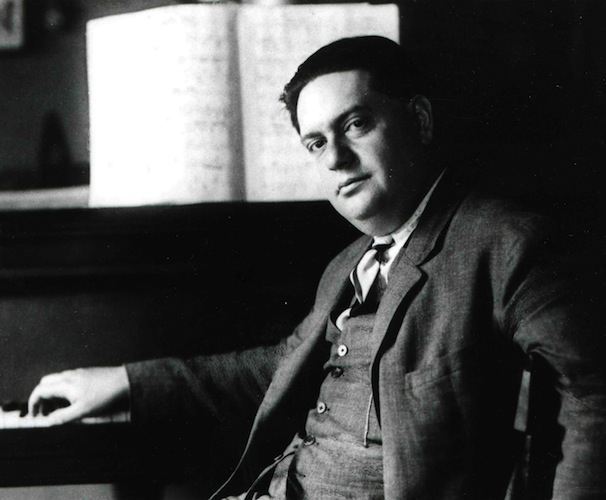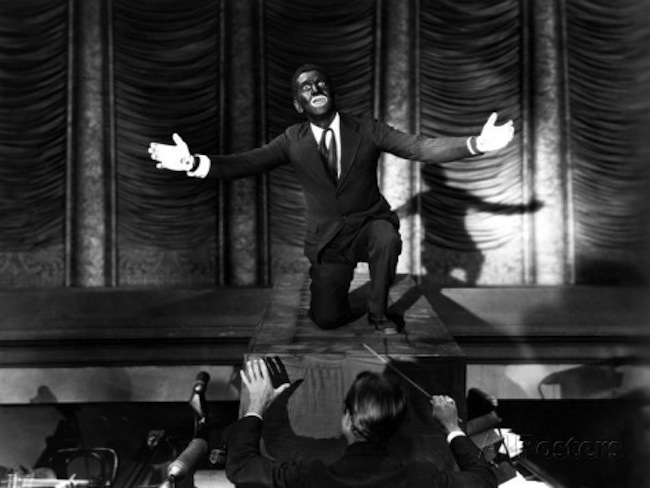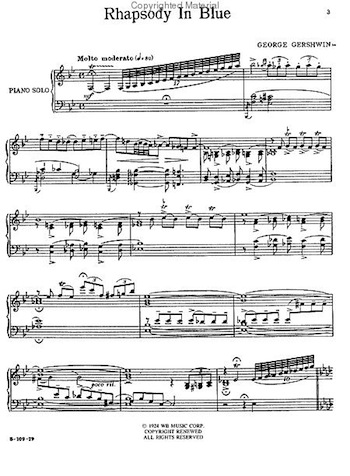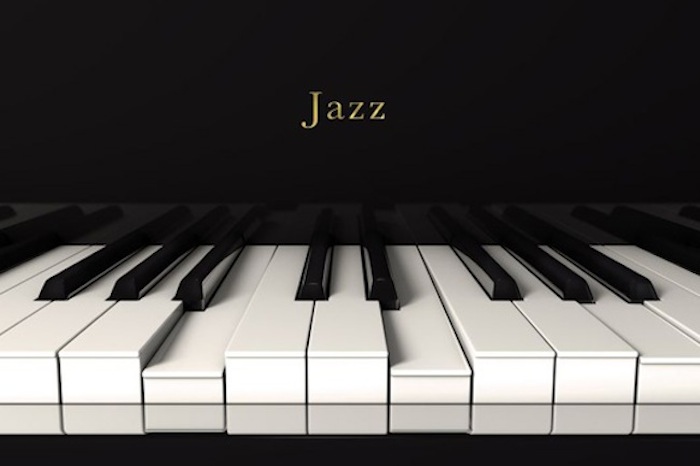Fuse Music Commentary Series: Jazz and the Piano Concerto — Setting the Margins
This post is part of a multi-part Arts Fuse series examining the traditions and realities of classical piano concertos influenced by jazz. The articles are bookended by Boston Symphony Orchestra concerts: the first features one of the first classical pieces directly influenced by jazz, Darius Milhaud’s Creation of the World (February 19 – 21) ; the second has pianist Jean-Yves Thibaudet performing one of the core works in this repertoire, Maurice Ravel’s Concerto in G (April 23 – 28). Steve Elman’s chronology of jazz-influenced piano concertos (JIPCs) can be found here. His essays on this topic are posted on his author page. Elman welcomes your comments and suggestions at steveelman@artsfuse.org.

Darius Milhaud circa 1930 — almost the first classical composer to incorporate jazz
By Steve Elman
Once upon a time, I was a simple writer who had what seemed to be a fun idea: why not survey all the piano concertos influenced by jazz? Surely there wouldn’t be a lot of them, and the adventure might provide some valuable insights.
That was more than three years ago. The release of Chick Corea’s The Continents (January 2012) offered a springboard. I followed up my Arts Fuse review of that CD with a relatively straightforward survey of nine piano concertos and concerto-like pieces written by people who mostly work the jazz side of the street. Along the way, I got the chance to hear Kirill Gerstein play George Gershwin’s Rhapsody in Blue at Berklee (March 30, 2012), and that performance gave me more to think about. The logical next step had to be a survey of the jazz-influenced concertos on the classical side, and that seemed simple enough – after all, how many could there be?
Yeah, right. Actually, as of this writing, there are more than 50 classical piano concertos directly influenced by jazz, along with some 20 works for piano and orchestra with significant jazz touches that aren’t exactly concertos, and at least 16 more in the same vein that are marginally influenced by jazz. And these stats document only what I know of so far. As I worked on the chronology, I heard from two composers who premiered jazz-influenced pieces for piano and orchestra in 2014, and I’m sure there are more composers I haven’t heard from, and more works I haven’t yet heard.
This can’t go on forever. With Jean-Yves Thibaudet due in Boston in April 2015 to play the Maurice Ravel Concerto in G with the BSO, the time has come to deliver the goods, even if the goods must be a work in progress.
With this post, I’m beginning the second phase of the essays I began in 2012. Over the course of the next weeks, I’ll lay out a history of jazz-influenced classical piano concertos and present some observations arising from that history. If all goes well, this phase will end with a review of Thibaudet’s performance, informed by that history.
But first . . . .
One of the core issues for me in this project was the definition of the jazz-influenced piano concerto.
The Boston Symphony’s upcoming performances of Darius Milhaud’s 1923 ballet Le création du monde (on a bill with Stravinsky, Prokofiev, and Poulenc, to be conducted by Stéphane Denève on February 19, 20, and 21) provide a sort of bookend to the Ravel performances in April, and they highlight some of the challenges that I came up against. Le création du monde is often cited as “the first classical work to incorporate jazz elements,” although two other pieces from the same year, Erwin Schulhoff’s Concerto [No. 2] for Piano and Small Orchestra, Op. 43 and Jean Wiéner’s “Franco-Américain” Piano Concerto are at least contemporary, and Schulhoff’s is surely the first to use “Allegro alla jazz” as a movement marking.
No matter how jazzy and fun Milhaud’s work is, it doesn’t walk or talk like a piano concerto. It’s a chamber-orchestra piece in which the piano is one of many instruments with small solo roles (the others are saxophone, clarinet, trumpet, oboe, violin, and flute). And yet the piano is there, and the jazz is there, and the critical discussion about it is there, so I couldn’t ignore it or pretend that it had no impact on the piano concertos that followed.
BSO Don’t-Miss: Jazz, Paris, and Kudos
A round of applause to the Boston Symphony for the programming of its concerts on February 19 – 21. It’s a shining example of something all too rare in American concert halls – the construction of a set of pieces that really illuminate one another. As I note in the accompanying post, the BSO will play Darius Milhaud’s 1923 ballet Le création du monde, which is reason enough by itself to go to Symphony Hall, but the entire program promises nothing less than a spiritual trip to Paris in the 1920s, jazz and all. First up is Igor Stravinsky’s Pulcinella Suite, a reduction and revision of music he created in 1920 for a Paris ballet production with costumes and sets by Picasso. Sergei Prokofiev’s first violin concerto comes next; it was premiered in Paris in 1923, with Stravinsky conducting. After intermission, it’s Milhaud’s ballet. The last piece is another ballet score, less well-known but very worthwhile – Francis Poulenc’s Les biches, written in Paris in 1924. James Ehnes will be the violin soloist in the Prokofiev, and Stéphane Denève will conduct.
I’ll have more to say in future posts about the state of programming in American concert halls and the impact of jazz on Paris in the 1920s.
Similar problems presented themselves when I was considering Gershwin’s Rhapsody in Blue. It’s not a concerto, but it has such profound influence on the concertos that come after that I couldn’t ignore it, and didn’t want to.
On the other side of the ledger, Dmitri Shostakovich’s two piano concertos, often cited as “jazz-influenced,” troubled me. Shostakovich had only the vaguest notion of jazz (example: his Jazz Suites incorporate circus music, of all things), and his two concertos, though high-spirited and good-humored, have only the most marginal connection to the jazz tradition. Only the first, from 1933, has something explicit – a single raggy moment near the end of the third movement.
And what about Howard Hanson’s Piano Concerto in G, Op. 36 (1948)? It’s shot through with syncopation, heartfelt melody, and very appealing vitality, but it simply doesn’t feel like jazz.
Finally, I had to consider works like Tobias Picker’s Keys to the City (1983) and John Adams’s Century Rolls (1999), pieces that operate exactly like concertos despite their titles and extra-musical programs.
It became clear to me that to give this survey the framework it deserved, I had to do a lot of thinking about boundaries – musical, of necessity, but also cultural. Jazz and classical music occupy distinctly different spaces in the cultural life of America, spaces that can never free themselves from the cultural baggage that attach to class and skin color. Any attempt to get these traditions into the same room for a conversation faces the same kinds of challenges that raise themselves whenever serious discussions occur between classes and ethnic groups in America. Even though most Americans hate to think about our long, hideous, hypocritical embrace of slavery, the foul odor of those centuries refuses to dissipate, and it affects American music as much as it affects any other aspect of our culture.
There was a time (from the 1930s roughly through the late 1950s) when the American classical world was much occupied with the expression of “the American character” (whatever that is) through music. Aaron Copland came closest to realizing this ideal, although the music that he wrote in this vein – jazz-influenced (like his Piano Concerto), cowboy-influenced (like Rodeo and Billy the Kid), mountain-influenced (like Appalachian Spring), etc. – tended to romanticize or abstract its inspirations.
This goal was probably a fool’s errand, but it led to attempts by a number of American composers to incorporate jazz or jazz-like elements in their work. That wasn’t as simple as it sounds.
Jazz, perhaps more than any other single genre, has found its definition in the ears of its beholders, and that definition has morphed dramatically over time. The “jazz” that influenced Gershwin and Copland when they wrote their concertos (in 1925 and 1926 respectively) was vastly different from the “jazz” that influenced Lee Hyla in his second Concerto for Piano and Chamber Orchestra and John Adams in his Century Rolls (in 1991 and 1999 respectively), and the differences in the perceptions of jazz aren’t simply a matter of the passage of time.

Al Jolson in 1927’s “The Jazz Singer.”
No single cultural phenomenon brings this issue into such bold relief as the huge success of one of the first films to incorporate synchronized sound, The Jazz Singer, made in 1927, four years after Milhaud’s Création, two years after Gershwin’s concerto, one year after Copland’s, and two years before Ravel’s. Not a single element of this story – which concerns the conflict between a father and son over whether the son will use his vocal talents in service to his religion or in pursuit of success on Broadway – has anything to do with jazz or the jazz tradition as we understand it today. Al Jolson was not a jazz singer, never pretended to be, and never tries to play one in this film. The facts that he performs “Mother of Mine, I Still Have You” and “Mammy” in blackface, that his role in his breakout Broadway show is consistently referred to as “jazz singer,” or even that he urges his backup band to “Get hot!” during his performance of “Toot, Toot, Tootsie” are irrelevant.
In fact, “jazz singing” as it should properly be understood had barely begun when the film appeared. To cite just two great pioneers: Louis Armstrong had begun to define it only the year before, with his recording of “Heebie Jeebies,” and Ivie Anderson had not yet joined Duke Ellington’s band. In the thinking of Americans who would never dream of buying a record by an African-American, much less venture to those neighborhoods where African-American dance bands were playing, “jazz singing” was an approximate term at best, and Jolson’s film did nothing to help their understanding.
From the 1920s forward, classical composers who decided to incorporate “jazz” into their work brought their own impressions of the music to their writing desks. In effect, they froze those impressions in place, and each concerto gives us a (limited) vision of how he or she perceived jazz at the time of composition.
George Gershwin came by his impressions honestly; he had contact with Harlem stride pianists when he was cutting piano rolls in the 1910s and had serious talks about music with James P. Johnson no later than 1920.
Had Gershwin lived into his eighties, he might very well have engaged with the bebop of the 1940s, the cool school of the 1950s, and even the innovations of the New Thing in the 1960s, not to mention what he might have heard in classical music in the forty years that followed his death. His pieces for the concert hall would certainly have evolved. As they stand, they are eternally youthful, eternally 1920s, and imbued with the flair of pre-swing syncopated dance music, which is now considered almost marginal to true jazz.
But at least he knew the real thing. Composers who came after Gershwin, stunned by and seeking to replicate the success of Rhapsody in Blue, incorporated Gershwin’s effects and voicings as if they represented the essence of “jazz.” And composers who did not follow Gershwin’s lead usually used the “jazz” they knew rather than that jazz that was. Their works do not represent a coherent vision; they are a series of snapshots.

I knew that my discussion of these pieces had to recognize and accommodate the shifting winds of culture. Still, after much listening, I came to feel that each of the pieces I categorized as a jazz-influenced classical piano concerto was an honest (and sometimes a courageous) attempt to engage with something distinctly American – even in the cases of the many non-American composers who have written jazz-influenced piano concertos. This is simply because jazz is American to its core. Engaging with jazz means engaging with America; and I think the reverse is true as well, at least for a preponderance of the musical community.
(I have to begin abbreviating “jazz-influenced piano concerto” somewhere, so please pardon the use of JIPC from here on.)
As I listened and re-listened to JIPCs, I discovered that I was in search of common ground – if not some shared principles among the pieces that would define the form, then at least a sense of a thread that might bind them into a sensible tradition.
This turned out to be a flaw in my thinking, for a very simple reason: the JIPC has never taken hold as a form with classical audiences, and only a handful of pieces have a continuity of life in the concert hall.
Despite anyone’s passionate wish to the contrary, if only a scant few specialists or academics hear a work, it might as well not exist. If no one hears a tree falling in the forest, it rots away in silence. It cannot influence what comes after, because very few actually hear it.
This means that a composer who takes it into his or her head to write a JIPC is almost starting from scratch. He or she may know the Gershwin and the Ravel, but few if any other concertos are likely to have had any impact at all – regrettably including the one JIPC to win the Pulitzer Prize, Yehudi Wyner’s concerto from 2004. Other than the two JIPC “hits” and his or her own impressions of jazz, this nameless composer usually starts from a very basic ground: the traditional form of the classical piano concerto.
Let’s look at that ground. Even more than the symphony or the sonata, the concerto has persisted as a form without program. It doesn’t seem to need a “Pastoral” or “Heroic” nickname, or an extra-musical story to tell, in order to capture listeners (Yes, I remember Beethoven’s “Emperor” concerto; it’s the exception that proves the rule, because the nickname attempts to capture the abstract feeling of the music rather than provide some narrative frame). For the concerto, the form IS the story. And no solo instrument offers more possibilities for interesting engagement than the piano, which can be a mini-orchestra on its own. The listener approaches a piano concerto with simple questions: How will the composer engage with this familiar fast-slow-fast structure? How will he or she resolve the dichotomy of ensemble and soloist – will the piano be a partner or a contender or something else? Even the most casual audience can grasp these essentials easily and enjoy the drama. The form has remarkable resilience, and apparently it’s an inexhaustible well.
Consider the differences in tone of the keyboard concertos of just five major explorers – Bach, Mozart, Beethoven, Brahms, and Rachmaninoff – none of whom wrote anything like the concertos by Gershwin and Ravel.

Jazz performance, which is usually built on simple elements and draws the listener along on an abstract (and often very complex) adventure, shares some of this pleasure in pure form. And the piano’s status in jazz is comparable to its status in the classical world. These two facts alone convinced me that this particular form would be ideal for a cross-cultural conversation, but I was disappointed by how little real conversation I found.
Jazz-oriented pianist-composers have been much more interested in hybridizing than classical composers have. Each of the works I discussed in depth in 2012, all written by musicians who primarily work on the jazz side of the street, is a frank attempt to blend the essences of the two genres. But most classical works that use jazz are not hybrids in this sense.
The classical composer interested in jazz, or even the composer familiar with it as a casual jazz player, has been far more likely to use jazz (as he or she sees it) as one element out of many that helps expand his or her arsenal of musical ammunition. He or she may find the noise effects of brass and wind innovated by jazz to be an irresistible tone color. He or she may push the syncopations in a composition towards the ease and grace of swing, finding that swing provides something emotionally that would otherwise be unavailable. He or she may admire the irreverence of jazz, its sly humor, and its capacity for self-parody, and put those qualities to work as a counterbalance to the weight and seriousness that characterize the classical tradition. Unlike a saxophone concerto or a “jazz ballet,” or some other form where jazz labeling is inevitable, the piano concerto allows a classical composer to use these elements judiciously, sometimes not even identifying them as jazz borrowings.
With all these gradual revelations in mind and many hours of music in my head, I tried to build a coherent chronology of jazz-influenced classical works for piano and orchestra. As I’ve explained, I was primarily interested in the classic form of the piano concerto because I thought it would provide the most useful framework for comparison. At the same time, I realized that I had to incorporate outlying works into the chronology, and that I even had to consider those works that that would have been different if jazz hadn’t existed. For better or worse, I’ve defined the margins as I see them.
Here is a link to the chronology as it stands right now, identifying the works by their proximity to the “hard-core” ideal of the JIPC. I know this is a work in progress. It will undoubtedly change as I hear from readers who suggest other works and other ideas, and I’ll endeavor to keep it as current as I can. After all, that’s why we have modern media, no?
More:
In the spirit of exposing these compositions to as many people as possible, I have provided information below about their on-line availability. YouTube links were operative as of this writing; however, the reader should note that these postings appear and disappear without warning. Spotify provides a more reliable resource, and also provides at least minimal compensation to the copyright holders. I have noted some of these examples as “Recommended recordings” when I believe they are particularly well-played.

Pianist Jean-Yves Thibaudet — a member of a generation of French pianists who understand that jazz inflection is a skill like any other. He is due in Boston in April 2015 to play the Maurice Ravel Concerto.
Recommended recordings of Maurice Ravel’s Piano Concerto in G:
Jean-Yves Thibaudet, Pascal Rogé, and Pierre-Laurent Aimard are of the generation of French pianists who understand that jazz inflection is a skill like any other, and each of them knows how to employ it when the time is right. They each have fine recordings available via Spotify. I like Thibaudet’s the best of the three, because Charles Dutoit gets the Montreal Symphony to play with rough edges that make the ensembles jazzy in the way I like to hear them. The Rogé and Aimard versions are neck-and-neck for place and show, as I see it, with Rogé getting a slight edge because of his great balance between jazz and classical feeling. On the other hand, Aimard has outstanding support from the Cleveland Orchestra led by Pierre Boulez, and the Cleveland band gets more “American” feeling into the ensembles than the Vienna Radio Symphony under Bertrand de Billy. So listen to any of them and enjoy.
I’d recommend one more, but it’s not on line, and it will probably surprise some listeners. The individual talents of the orchestral players selected by Leonard Bernstein for his 1958 recording (with the “Columbia Symphony Orchestra”) may not be up to the highest symphony standards, but it seems to me that Bernstein wanted players with a feel for popular music in order to get a distinctly jazzy quality into the big ensembles. Bernstein’s piano playing also has a swinging vitality in this one that suggests something of Gershwin playing Ravel.
• Jean-Yves Thibaudet, p; Orchestre symphonique de Montréal; Charles Dutoit, cond [Rec. 1995, Montréal; issued with concerti by Honegger and Françaix, London CD, 1996] Available via Spotify.
• Pascal Rogé, p; Vienna Radio Symphony, Bertrand de Billy, cond [Rec. 2004, Vienna; issued with Gershwin Piano Concerto, Oehms CD, 2005] Available via Spotify.
• Pierre-Laurent Aimard, p; Cleveland Orchestra, Pierre Boulez, cond [Rec. 2010, Cleveland; issued with Ravel’s Concerto for the Left Hand), DG CD, 2010] Available via Spotify.
• Leonard Bernstein, p & cond; “Columbia Symphony Orchestra,” a studio ensemble of New York-based musicians selected by Bernstein [Rec. 4/7/58, New York City; originally issued (with Shostakovich Piano Concerto No. 2) on Columbia LP, 1958; reissued (with Liszt Piano Concerto No. 1 and Rachmaninoff Rhapsody on a Theme of Paganini) on Sony Classical CD, 1992; not available on-line.]
Recommended recordings of George Gershwin’s Piano Concerto in F:
The 1949 Oscar Levant recording sets a standard that very few modern recordings can match, but, as of this writing, it cannot be heard on-line.
Of the modern recordings, the Hamelin / Slatkin live performance (not released on CD, but hearable on YouTube) is extraordinary – finely detailed, exquisitely played, and demonstrating that the soloist, conductor, and even the principal players in the orchestra (notably the featured trumpeter) completely understand the jazz inflections and the classical majesty that the piece should have. This deserves a properly remastered CD release.
Ohlsson cannot quite match Hamelin’s feeling, but his sensitivity to the piece’s lyricism makes his version well worth hearing, and Tilson Thomas is an ideal conductor for this music.
• Oscar Levant, p; New York Philharmonic Orchestra; André Kostelanetz, cond [Rec. 1949; originally issued in 78 rpm set; reissued in “Levant Plays Gershwin,” CBS CD, 1987; not available on-line.]
• Marc-André Hamelin, p; Netherlands Radio Philharmonic Orchestra; Leonard Slatkin, cond [Rec. 2006, Amsterdam Concertgebouw] Available via YouTube
• Garrick Ohlsson, p; San Francisco Symphony Orchestra; Michael Tilson Thomas, cond [Rec. 2004] Available via Spotify.
To help you explore other compositions mentioned in the piece above as easily as possible, my full chronology of JIPCs contains detailed information on recordings of these works, including CDs, Spotify access and YouTube links.
Next in the Jazz and Piano Concerto Series — Core questions: Who cares? Who will buy? Who will program?
Steve Elman’s forty-three years in New England public radio have included ten years as a jazz host in the 1970s, five years as a classical host in the 1980s, a short stint as senior producer of an arts magazine, thirteen years as assistant general manager of WBUR, and currently, on-call status as fill-in classical host on WCRB / Classical New England three years. He was jazz and popular music editor of the Schwann Record and Tape Guides from 1973 to 1978 and wrote free-lance music and travel pieces for The Boston Globe and The Boston Phoenix from 1988 through 1991.
He is the co-author of Burning Up the Air (Commonwealth Editions, 2008), which chronicles the first fifty years of talk radio through the life of talk-show pioneer Jerry Williams. He is a former member of the board of directors of the Massachusetts Broadcasters Hall of Fame.
